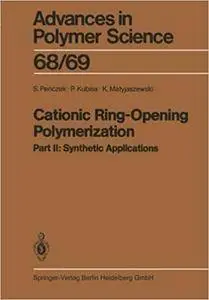Cationic Ring-Opening Polymerization, Part II: Synthetic Applications by Stanislaw Penczek, Przemyslaw Kubisa, Krzysztof Matyjaszewski
English | 1985 | ISBN: 3540137815 | 317 Pages | PDF | 30.4 MB
English | 1985 | ISBN: 3540137815 | 317 Pages | PDF | 30.4 MB
Polymerization: Synthetic Applications. This volume represents a comprehensive review of the subject, indeed a definitive treatment of the field. This whole work is a truly comprehensive review and not a "telephone directory": in addition to detailed discussions of the greatest variety of cationic heterocyclic polymerizations it is chockfull of thoughtful criticism, analysis, and sometimes reanalysis of published information, with deep insight into explaining heretofore seemingly conflicting observations or conclusions. The authors' interpretation of "unusual" copolymerization data is particularly powerful and will be thoroughly studied and often quoted in the expert literature.
The authors combine synthesis thermodynamics and kinetics, and view their field in a holistic all-embracing manner. There is a constant interplay between polymer synthesis and mechanistic interpretation. They strive to generalize and to simplify, and helped by their deep understanding of fundamentals often succeed in deriving conclusions. When they are stymied they so state and call for additional experiments to fill the gaps in our knowledge. And they pinpoint these gaps. The organization of the book follows a logical sequence: After a thorough presentation of basic thermodynamic principles and the Jacobson-Stockmayer cyclization theory, the authors discuss in depth all kinds of aspects of the various heterocyclic compound classes. In addition to detailed discussions of mechanisms, many other facets of heterocyclic polymerizations are treated, e.g., monomer synthesis, contemporary research trends, industrial significance. The treatise ends with an excellent up-to-date discussion of random, block and graft copolymerizations of heterocyclics.



